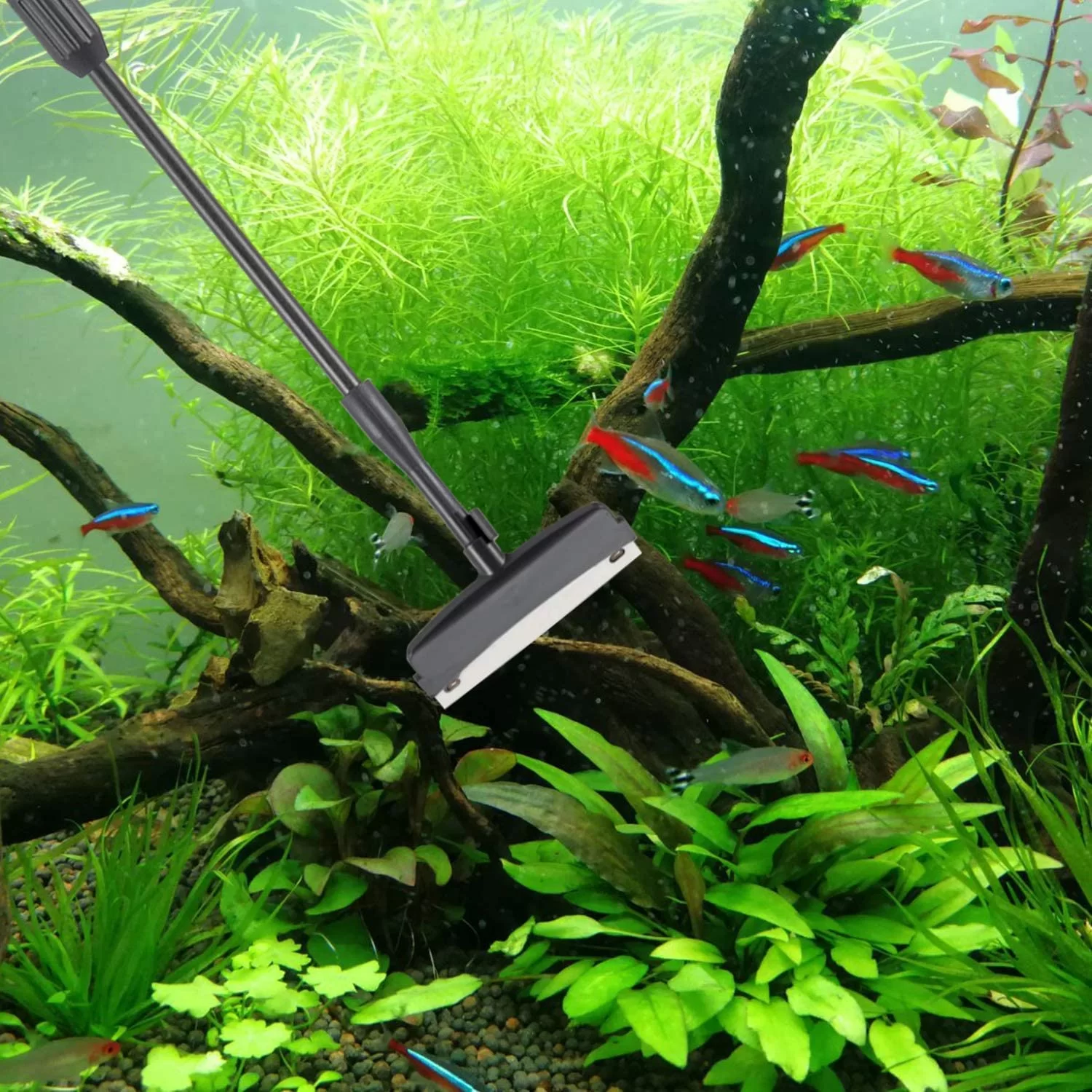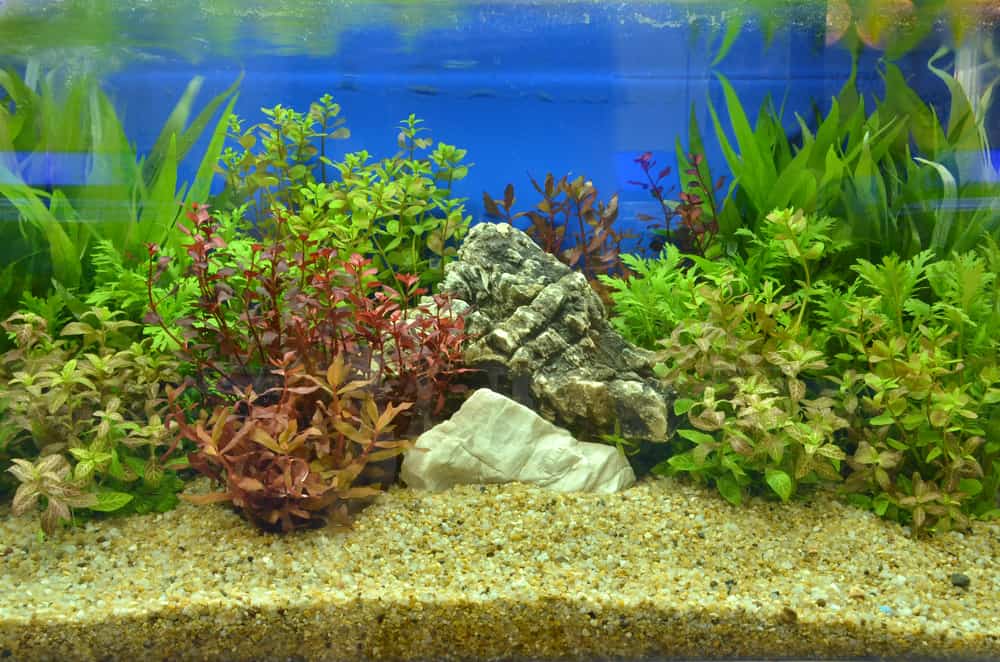Aquatic Knowledge
How to Clean Aquarium: The Ultimate Guide for Crystal Clear Water
Maintaining a clean aquarium is essential for the health and happiness of your fish. It’s not just about aesthetics; a dirty tank can lead to numerous problems, including stress and disease for your aquatic pets. If you’re wondering how to clean aquarium effectively, you’re in the right place. In this guide, I’ll walk you through everything you need to know to keep your tank sparkling clean and your fish thriving.
Why is Cleaning Your Aquarium Important?
Before we get into the nitty-gritty of how to clean your aquarium, let’s talk about why it’s so crucial. Think of your aquarium as a mini-ecosystem. In nature, fish have entire lakes, rivers, and oceans to swim in, where natural processes help maintain water quality. But in an aquarium, you’re in charge of maintaining that balance.
A clean aquarium ensures that water parameters stay stable, which is vital for the health of your fish. If your tank isn’t properly maintained, harmful substances like ammonia, nitrates, and nitrites can start to build up. These toxins can be a silent killer, causing stress and potentially fatal health issues for your fish. It’s kind of like living in a house with poor air quality—eventually, it takes a toll on your health.
Beyond keeping the water safe, regular cleaning helps prevent algae from taking over. Algae growth can quickly turn your beautiful, clear tank into a green, murky mess. Not only does this make it hard to see your fish, but it can also disrupt the delicate balance of your aquarium’s environment.
How Often Should You Clean Your Aquarium?
Now that we’ve established why cleaning is essential, let’s talk about how often you should roll up your sleeves and get to work. The frequency of cleaning depends on a few factors: the size of your tank, the number of fish you have, and the type of filtration system in place.
As a general rule, a weekly partial water change is a good habit to maintain. This helps remove any waste that might be floating around and keeps the water fresh for your fish. Think of it like changing the sheets on your bed—fresh water equals a happier, healthier environment.
In addition to your weekly water change, a monthly deep clean is typically enough for most tanks. This involves cleaning the substrate, scrubbing the sides of the tank, and giving your filtration system a good once-over. But don’t wait for your regular schedule if you start noticing signs of trouble like cloudy water, funky odors, or a sudden algae invasion. These are all signs that your tank might need an extra cleaning session to keep things in balance.
Remember, a clean tank isn’t just about appearances; it’s about creating a safe and stable environment where your fish can thrive.
Essential Tools for Aquarium Cleaning

To clean your aquarium effectively, you’ll need the following tools:
- Siphon or Gravel Vacuum: For removing water and cleaning the substrate.
- Algae Scraper or Magnetic Glass Cleaner: For cleaning the aquarium glass.
- Buckets: For water changes and cleaning decorations.
- Soft Brush: For scrubbing decorations.
- Water Conditioner: To treat tap water before adding it to the aquarium.
- Test Kits: For monitoring water quality.
These tools will make the cleaning process easier and more efficient.
How to Clean Aquarium: Step by Step Guide

Step 1: Removing Some Water
Removing some of the water from the aquarium is the first significant step in the cleaning process. Here’s how to do it:
- Use a Siphon or Gravel Vacuum: These tools help you remove water while also cleaning the substrate. Insert the siphon into the aquarium and start the water flow. Move it around the gravel to remove debris and waste.
- Remove 20-30% of the Water: Aim to remove about 20-30% of the water. This amount is sufficient to reduce waste without causing too much stress for your fish.
- Be Careful Not to Disturb the Fish: Work gently and slowly to avoid causing stress to the fish. If your fish seem particularly agitated, take breaks or slow down the process.
Step 2: Cleaning the Aquarium Glass
The first step in how to clean aquarium is to clean the glass. Algae can quickly build up on the glass, obstructing your view and affecting the tank’s overall appearance.
- Use an Algae Scraper: Start by using an algae scraper or pad to remove any algae from the glass. If you have a particularly stubborn spot, a razor blade (for glass tanks only) can help.
- Wipe the Outside: Don’t forget to clean the outside of the glass as well. Use a damp cloth to wipe down the exterior, avoiding any glass cleaners that could harm your fish.
Step3: Cleaning the Gravel or Substrate
The gravel or substrate is where most of the waste and debris accumulate. Regular cleaning of the substrate is crucial for maintaining a healthy environment.
- Use a Gravel Vacuum: A gravel vacuum is the best tool for this job. Gently press it into the gravel and siphon out the debris without disturbing the substrate too much. Make sure to cover all areas of the tank.
- Partial Water Change: While vacuuming, you’ll also be removing water from the tank. Aim to change about 25-30% of the water during each cleaning session. Refill with dechlorinated water that’s the same temperature as the tank.
Step 4:

The filter is the heart of your aquarium, working continuously to keep the water clean. But even the best filters need regular cleaning to function properly.
- Check the Filter Media: Open up the filter and inspect the media. If it’s clogged with debris, rinse it in a bucket of tank water. Never rinse it under tap water, as this can kill the beneficial bacteria living there.
- Clean the Filter Housing: Wipe down the inside of the filter housing with a sponge or cloth. Reassemble the filter and make sure everything is in working order before turning it back on.
Step 5: Cleaning the Decorations
Decorations can also accumulate algae and debris, detracting from the beauty of your tank.
- Remove and Soak: If your decorations are removable, take them out and soak them in a bucket of tank water. Use a soft brush to scrub away any algae or dirt.
- Avoid Harsh Chemicals: Never use soap or harsh chemicals to clean decorations, as they can leave residues that are harmful to fish.
Reassemble and Refill
Once everything is clean, it’s time to put it all back together.
- Refill the Tank: Slowly refill the tank with dechlorinated water. Make sure the water is at the same temperature as the tank to avoid shocking your fish.
- Turn On Equipment: Plug in and turn on all the equipment. Double-check that everything is working correctly, including the heater, filter, and lights.
Maintaining a Clean Aquarium
Regular Maintenance Schedule
Keeping a clean aquarium isn’t just about deep cleans; regular maintenance is key. Schedule weekly partial water changes and monthly deep cleans to keep your tank in top condition. A consistent routine will make the cleaning process quicker and easier over time.
Monitoring Water Parameters

Regularly testing the water is crucial to maintaining a healthy aquarium. Use a water testing kit to check for levels of ammonia, nitrites, nitrates, and pH. Keeping these parameters stable will prevent many common aquarium problems.
Controlling Algae Growth
Algae growth is a common issue in aquariums, but it can be controlled with proper care.
- Reduce Lighting: Algae thrives on light, so reducing the amount of time your aquarium lights are on can help control growth.
- Add Algae Eaters: Introducing algae-eating fish or invertebrates, such as snails or shrimp, can naturally keep algae levels in check.
Dealing with Common Cleaning Challenges
Keeping your aquarium clean is essential for the health of your fish and the beauty of your tank, but sometimes things don’t go as smoothly as planned. Here’s how to tackle some common issues that might pop up after cleaning.
Cloudy Water: What’s Going On?
So, you’ve just cleaned your tank, and now the water looks cloudy—what gives? This could be due to an overgrowth of bacteria or maybe some improper cleaning techniques. It’s like when your windows look dirtier right after you clean them; frustrating, right? To clear things up, you might want to reduce how much you’re feeding your fish (leftover food can cloud things up), boost your filtration system, or even add a water clarifying agent to help things settle down.
Algae Blooms: The Green Invasion
One minute your tank is crystal clear, and the next, it’s like a green alien has taken over. Algae blooms can sneak up on you and be tough to manage. If you find your tank suddenly overrun with algae, start by reducing how much light your tank gets—algae love light! More frequent water changes can also help keep algae in check. Plus, adding some algae eaters to your tank is like inviting a cleaning crew to take care of the problem for you.
Fish Stress: Keeping the Calm
Cleaning your aquarium is important, but did you know it can stress out your fish? Imagine someone coming into your home and moving everything around every few days—it’s no wonder your fish might get a little freaked out. To minimize stress, be as gentle as possible when handling your fish and equipment. Also, consider using stress coat conditioners in the water post-cleaning. These can help soothe your fish and make their environment feel a bit more like home again.
Conclusion
Cleaning your aquarium is essential for keeping your fish healthy and your tank looking beautiful. By following the steps outlined in this guide on how to clean aquarium, you can ensure that your aquatic pets thrive in a clean and safe environment. Regular maintenance, along with the right techniques, will keep your aquarium in top condition and provide a stunning display of aquatic life.
FAQs
What is the best way to clean an aquarium? The best way to clean an aquarium involves regular water changes, cleaning the glass, decorations, and substrate, and maintaining the filter and water quality.
How do I know when my aquarium needs cleaning? Signs that your aquarium needs cleaning include cloudy water, algae buildup, and an unpleasant smell. Regular testing of water parameters can also indicate when cleaning is needed.
Can I clean my aquarium with household cleaners? No, household cleaners can contain harmful chemicals that are toxic to fish. Always use products specifically designed for aquarium use.
How do I maintain a clean aquarium with minimal effort? Implementing a consistent maintenance routine with regular water changes, testing, and cleaning can help maintain a clean aquarium with minimal effort.
What should I do if my fish get stressed during cleaning? If your fish get stressed during cleaning, try to work more slowly and gently. Use soft tools and perform smaller, more frequent water changes to minimize stress.
